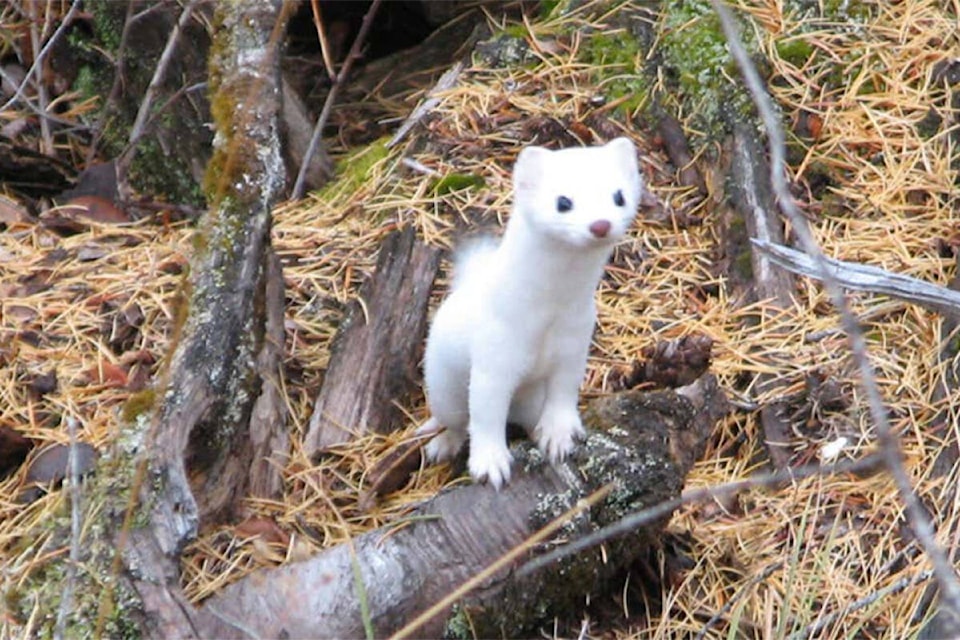Last time I wrote about the three species of weasels (ermines) that occur in B.C., but I did not mention the fourth which lives on Haida Gwaii – the Haida ermine. Until recently the Haida ermine was considered a subspecies of the short-tailed weasel (the ermine) and is known as Mustela erminea subspecies haidarum.
A 1999 study listed it as being endemic to Haida Gwaii, but it has since been found on Prince of Wales Island in southeast Alaska. DNA studies indicate that it was a hybrid that occurred over 300,000 years ago between the North American short-tailed weasel and the Eurasian species.
It is thought to have survived in ice-free refugia during the Pleistocene glaciations and was isolated since then from other short-tailed weasel populations by the sea. As often happens on islands, the long-term isolation meant the DNA and resulting morphological features of the Haida ermine had evolved to be sufficiently different from the original parent types that it should be considered a subspecies.
At that time, it was classed provincially as a red-listed (endangered/threatened) species partly because of its rarity, but also because of the lack of information about its habitat requirements. It is still red-listed.
The 1999 study by Reid et al. indicated that it was possibly suffering from competition for food with the native marten (Martes americana) and introduced red squirrels. Ermine on the mainland prefer voles and lemmings, which are not present on Haida Gwaii. The Haida ermine seems to be surviving on deer mice, small birds and their eggs, invertebrates, and intertidal creatures, as well as scavenging. It may be doing well scavenging deer carcasses.
Field research in the 1999 study indicated the Haida ermine is more commonly found, and prefers riparian cover as well as marine foreshore habitat. It is thought that the removal of the understory cover by introduced deer could have affected the distribution and habitat preference of the Haida ermine.
There did not appear to be any strong habitat relationship with old growth, per se, but the animals do need the cover provided by downed woody debris for both protection against predators and for hunting under snow.
Predators could be large owls and hawks, but of particular concern are feral cats as well as introduced rats and raccoons. Trapping of ermine was banned until more information became available.
One of the more obvious morphological differences between the Haida and other ermines is that the head is more elongated than its mainland relatives.
In 2021 Jocelyn Colella, an evolutionary biologist at the University of Kansas, was studying animals that had been isolated on coastal island archipelagos. She found that both the Haida ermine’s elongated skull and its genetic composition were so different that it should be considered a distinct species and is now scientifically known as Haida ermine (Mustela haidarum).
